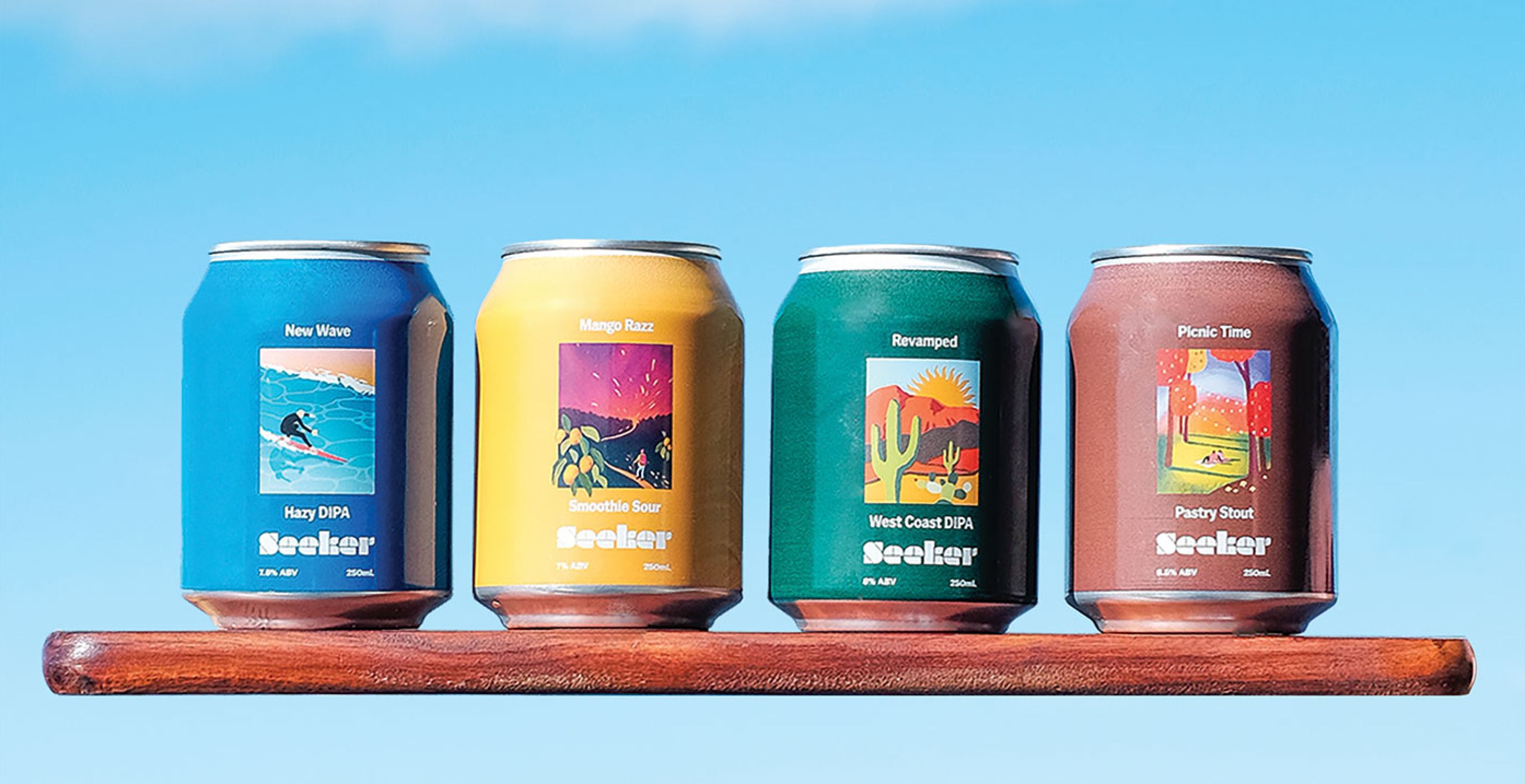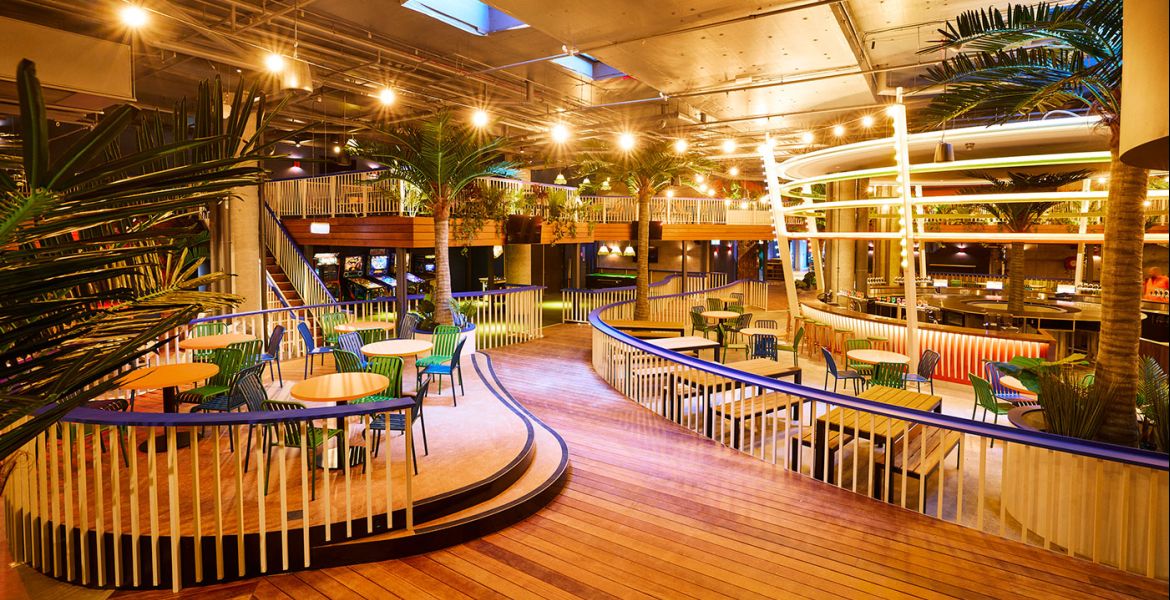Since around the time Scott Morrison became Prime Minister, Australia’s limited releases have tended to look a certain way. We're not saying the former PM was responsible for such largesse, but towards the end of the last decade many of the biggest craft beers hitting the market started appearing in the biggest format cans too – largely 440ml and occasionally 500ml tallboys.
There's plenty to be said about brewers' decision to supersize too: 440ml cans allow beer drinkers to fill most fancy home beer glasses – if not with little left over – while they also provide a good glug of beer for friends splitting one tin between two or a few.
But what if you don't have friends with whom to share? What do you do if you're in the mood for treating your palate to a hefty, flavour-forward beer but, at the same time, you don't want to overdo it? What if it's a Wednesday and you've got meetings the following morning?
It’s a problem Seeker Brewing have sought to solve with the launch of a new series, The Art Of Flight: big beers sold in 250ml tins and designed to be bought in mixed packs. Like most locals, they have released their own limited releases in 440ml cans but here, as the name alludes, they wanted to reimagine the kind of tasting flight experience you can enjoy in a taproom tasting paddle to the comfort of the beer lover's home.
Behind the concept are the twin minds of Jeff and Curtis Argent, one that Jeff says has been driven by Curtis and the way in which he wants to drink.
“[Curtis has] been badgering me for it for a long time,” Jeff explains. “'Why don’t we just do small cans, put big beers in them, and then I could buy a four-pack of four different beers for home and not be written off?’”

For Curtis, who looks after front-of-house and operations for Seeker, fundamentally it’s about making it easier for drinkers to work through the kind of bigger beers upon which the Wollongong brewery have built a reputation. It’s why they’ve named the series The Art Of Flight, in recognition of the fact that even many drinkers who love pastry stouts or thick, juicy, high-ABV IPAs can find them challenging to chew through. What's more, they hope the smaller format cans might tempt drinkers unsure of what, say, a smoothie sour is to be more likely to experiment.
“You can commit to the 250ml format of these beers if you’re not sure about the style,” Curtis says.
Also driving the concept is the financial reality of the current economic climate; with discretionary spending down, even beer drinkers looking to explore are often doing so with a tighter budget.
“We are hedonistic,” Curtis says. “You go to a bottleshop and want to try all these things but you don’t want to break the bank.”
This new approach to limited releases was also about playing to their own strengths. As a brewery, Seeker’s focus is on boozier, heavily-hopped and flavour-forward beers and he wants Jeff and the brewing team to be free to continue their approach.
“That’s what they love brewing,” Curtis says. “That’s where our strength lies, but I wanted to make them more accessible for everyone.”

The arrival of The Art Of Flight comes as most independent breweries have slowed down their limited release schedules and many have looked to focus on simpler beers that are more affordable to both make and buy. At Seeker, there's been hesitancy to go down that path, with Jeff feeling they can’t compete on price with the biggest breweries.
Curtis adds that when head-to-head with mainstream beer, it can be hard to sway rusted-on drinkers away from their beer of choice and for Seeker, they want to appeal to more curious drinkers searching for new flavours.
“A lot of breweries have fallen back into more mainstream stuff,” Curtis says, “which I think is great, but a lot of drinkers are keen to stick with what they know.”
Nailing their colours to the mast, the opening lineup consists of a hazy IPA made with Phantasm, a double West Coast IPA, a mango, raspberry and banana smoothie sour, and a peanut butter, caramel chocolate pastry stout.
In designing the tiny tins, as a general rule they want each beer to sit at around the 1.5 standard drink mark, while they’ve also kept each the same price to further encourage exploration.
“We’ve set a loose rule that we’ll only put above 7 or 7.5 percent beers in them to make it really attractive in terms of price,” Jeff says.
“We’ve averaged out the cost of them so they all hit the same price point. We might take a loss on the most expensive beer but make some money on the cheapest.”
There was some initial hesitancy before committing to the concept, driven by concerns around the cost of putting a limited amount of liquid into a range of new releases. Coming up with fresh can designs, ordering them and paying your staff to put less beer into four different cans does add up and, ultimately, even if someone buys a mixed pack, they're still buying half as much beer as they would in a double 440ml release.
But if they move enough of the beer, they will be able to get a better price on the 250ml cans. And when it comes to the cost to beer drinkers, they’ve kept the mixed four-packs pricing in line with a core range beer such as their XPA – and will make roughly the same margin.
“Some would say that’s crazy because limiteds do tend to get your best margin in the 440ml format,” Jeff says.
“But if we’re selling more of it and making more beer, we’re happy with that.”

Such cans are more commonly used for premium RTDs, like premixes from Four Pillars or Pour Tom's canned cocktails. When it comes to brewers, the only vaguely local example we’re aware of is New Zealand’s Urbanaut Brewing, who have used the format for a few releases, including their blended beers: two separate beers designed to be consumed separately and then as one.
Given the rare nature of 250ml format beers, Seeker have been working closely with bottleshops, hoping they'll help spread the message of buying four beers as one. They've been met with some hesitancy, with some retailers saying even 330ml limiteds can be a tough sell for bigger beers.
“We’ve already got some interesting feedback. And some bottleshops are really into the idea,” he says. “Some say that most craft beer drinkers seek out 440ml limited release cans so they’re sceptical.
“Some say, ‘But small cans don’t work’.
“But I’m like, ‘Relax, these are tiny cans – there’s a point of difference.'”
While it's too early to say how well such beers will be received, Seeker plan to keep the series going in the hope it will catch on.
“We are going to commit to it for some months and a lot of releases to really push it home.”
As for what tiny tin success might look like, Jeff cuts in to say that, for his brother, the goal is simple enough: he wants to be able to buy great beer in a can that's suitable for sampling in the middle of the week.
“Curt’s idea of this being successful is if one or two other breweries do the same thing,” Jeff says with a laugh.
Curtis adds: “I want other people to do it so there’s a trend and I can try their beers in this format.”
We have mixed packs of Seeker's The Art Of Flight beers to give away to Crafty Cabal members – details here. Not yet a member? Sign up now.




















